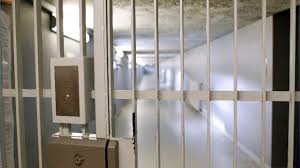Prisons are not meeting the needs of women

https://www.google.com/url?sa=i&rct=j&q=&esrc=s&source=images&cd=&cad=rja&uact=8&ved=0ahUKEwjk2duz-rfRAhUE4YMKHaCdDqsQjB0IBg&url=http%3A%2F%2Fconnecticut.cbslocal.com%2F2014%2F08%2F22%2Fsuiccide-at-york-correctional-institution%2F&bvm=bv.143423383,d.ZGg&psig=AFQjCNFv_jv7Ivioh-5M8Z1EvQe-ch5c6g&ust=1484150676353952
Everyday, women in correctional institutions across the country struggle to obtain the proper materials they need to manage their menstrual cycles. The fact is, incarcerated women are being denied their civil rights by institutions who are not willing to invest in the women they’re detaining, which ultimately leads to lasting hygiene and health problems.
For several years now, we have seen controversy in the news and television shows such as Orange is the New Black, Prison Break, Wentworth, etc over what is considered a crime, the death penalty, juvenile punishment, corrections effectiveness, and so on. The idea of inaccurate menstruation procedures is so uninvolved because we, as people, do not consider such assumably solved subjects to be neglected.
We may not have even considered it is happening right within our own state. At York Correctional Institution in CT, during their periods, which are most usually synced with each other to occur at the same times, women are given a maximum of 5 pads to split each week with other inmates in need. This however, is if they receive anything at all.
One woman, Patricia Williams, said in the Victorville California federal prison, “Women aren’t given any products and need to fend for themselves.” As unhygienic as this is, being deprived of the necessary supplies causes women to be humiliated, sometimes purposely by their correctional officers for both bleeding through their unlaundered clothing for a week straight, and not getting enough time to fix the issue in the shower.
These inmates are in fact able to purchase their own supplies from the correctional facility, however products are priced two times higher for incarcerated women than they are for the average female.
Aside from this, women are known to generally make about 75 cents a day from working, yet according to former correctional officer Cherri Robinson, men are given around $1.75 a day, therefore when males only need to purchase their everyday hygiene products such as deodorant, females are given less money to purchase both this and their menstruation necessities.
As some women do have external contacts, others do not, and although only money can be deposited in their commissaries, women who are not provided for their menstruation needs will continue to struggle with both the humiliation and lack of hygiene of openly menstruating. The long term effects of this are what’s important.
Women are getting bacterial diseases from the lack of cleanliness, so this isn’t just an issue of wanting to feel clean or not. In every prison handbook, there is a rule of themselves to ensure proper health and hygiene for their prisoners. The definition of hygiene: conditions or practices conducive to maintaining health and preventing diseases, especially through cleanliness. Clearly, institutions are failing to allow this to happen, and are violating health code laws.
Why is this? The main reason is due to budget cuts in these prisons hitting women-specific services first. According to the New York Times, the average amount of taxpayer money spent on each inmate is around $31,286, making the government budget for these prisons exceptionally tight. As unfortunate as it is, the reason for cutting the budget in these targeted areas is due to the fact that other prisoner needs such as food, sheltering, clothing etc. are assumed more necessary.
What does this mean for women’s rights?
In an interview with history teacher John Tenney, the concept of women’s rights ties in with the issue. Tenney explains, “It is not ethical to assume these needs an extra luxury when men don’t have the issue to deal with themselves.”
All in all, the resources available for incarcerated women across the country are at a minimal, and as they continue to struggle with the humiliation and discomfort of being neglected hygienically, more and more light is being shown by the public on the extra difficulties they face as women.













